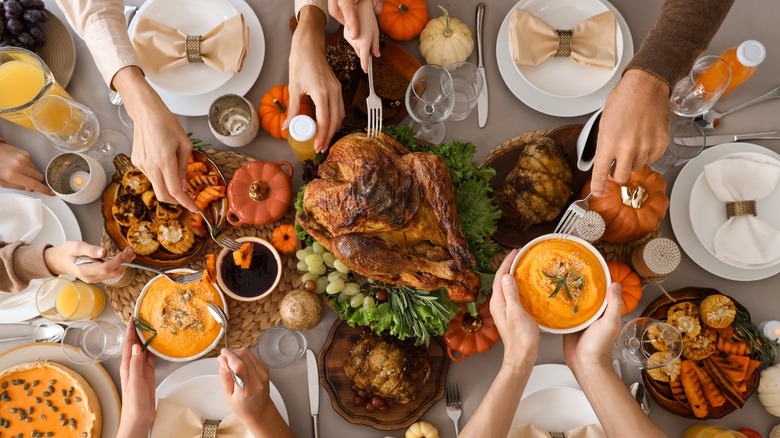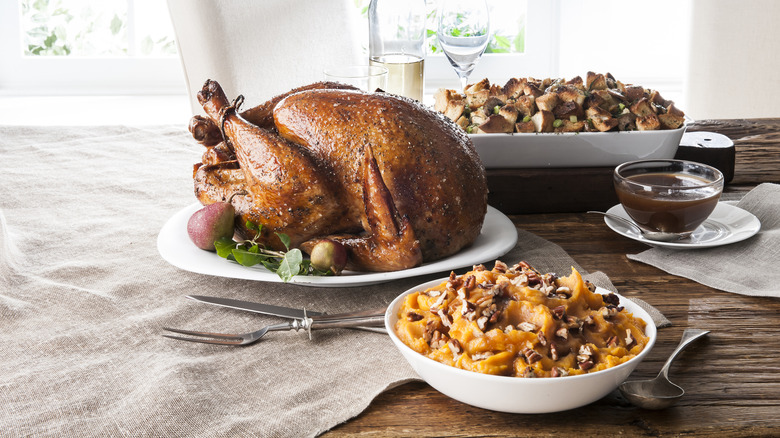This Is The Biggest Culprit Of Food Poisoning On Thanksgiving
Ideally, the yearly tradition of holding hands and giving thanks ends with happy family memories and full-to-the-brim bellies. But if you're not careful in the days and hours leading up to the big feast, Thanksgiving could also end with unfortunate food poisoning. The biggest culprit of foodborne illness during the holiday season is none other than the classic Thanksgiving turkey. Mishandling the turkey can lead to contamination with several pathogens, including Clostridium perfringens — bacteria commonly linked to poultry, causing most outbreaks particularly in November and December.
There are several unsafe practices people might unknowingly do on Thanksgiving due to the volume of food being served at once: Using the same cutting boards and knives for raw meat and other foods, not washing their hands during food prep, improperly defrosting and cooking the turkey, and leaving the cooked food at room temperature for too long are some of the most common mistakes.
When it comes to defrosting the turkey, you should never do so on the kitchen counter. The USDA names refrigerator thawing as the safest method. It does require some patience (as it could take four days to defrost a 16-pound turkey), so plan ahead with a solid Thanksgiving timeline. If you find yourself in a serious time scramble and need a faster method, you can also use cold water or a microwave to thaw the turkey, but you'll have to cook it immediately afterward to keep it safe.
How to safely cook a Thanksgiving turkey
Once your Thanksgiving turkey is safely defrosted, do not wash it. Washing raw meat only spreads bacteria around your kitchen, warns the USDA. You also don't want to stuff the turkey the night before — this practice encourages bacteria growth. The safest way to cook a stuffed turkey is to place it in the oven immediately after stuffing, at a temperature of at least 325 degrees Fahrenheit. Don't cook the turkey overnight at a low temperature, as anything under 325 degrees Fahrenheit is considered unsafe. When the bird is done, its internal temperature should be no less than 165 degrees Fahrenheit. The USDA recommends measuring the internal temperature in three different spots: The thickest part of the breast, the innermost part of the wing, and the innermost part of the thigh.
Although the Thanksgiving table is sure to be completely packed, don't let the food sit out for longer than two hours before refrigerating it. Leaving food at room temperature multiplies bacteria, and after the two hours pass, the food needs to be discarded. The leftovers should be stored in the fridge in shallow containers and eaten within four days. Alternatively, check out our 23 Thanksgiving leftover recipes to repurpose them into a new tasty dish, or simply freeze the leftovers within the four-day window.

